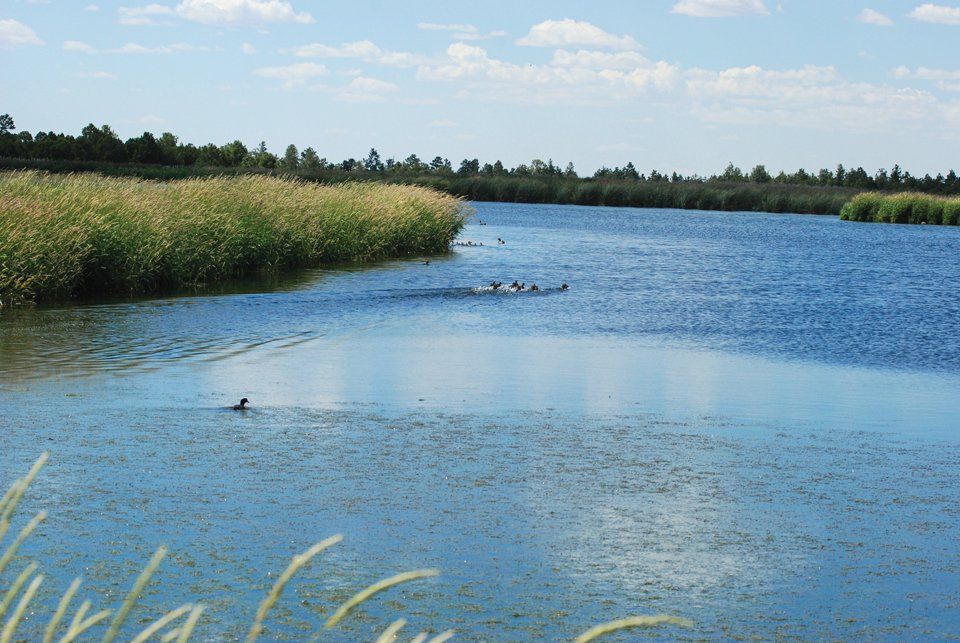WETLANDS; NATURE'S KIDNEYS

White Mountain wetlands may not be expansive or widespread but all of them still provide many services without charging us a dime. Wetlands can be a constant source of water in the arid Southwest. Wetlands can filter out toxic and dangerous compounds and turn them into mulch. Wetlands can dam up and absorb large rain flow events like a huge sponge without any computer codes or human operators involved!
Since wetlands are usually stands of thick vegetation flooded with standing water -- at least most of the year -- they can release this water more slowly than a river or lake and provide water to wildlife during that critical period after the snowmelt is gone and before the monsoons start. Having a constant and permanent source of water -- even if it’s not a huge pond or lake --can provide for a diverse variety of wildlife from elk to bats to frogs.
Wetlands can be thought of as Nature’s kidneys and liver. Just like our kidneys, wetlands can regulate the amount of water in the system by absorbing floods and then slowing the releasing of massive amounts into the groundwater as well as the surface watershed in many cases, eventually reaching an equilibrium where wildlife can find food and cover. Our livers are good at filtering toxins and impurities but a wetland can do even better, given enough time. The trillions of bacteria, fungi and micro-organisms that inhabit wetlands are the good kinds, as they slowly but surely break down compounds toxic to humans into harmless molecules.
Many of the soil types in the White Mountains allow rain and snow to percolate quickly into the groundwater below. So, it isn’t easy to find a valuable oasis of habitat called a wetland. The largest and most convenient to view wildlife are created wetlands using water from wastewater treatment plants in Show Low and Pinetop. Their discharge water has been treated for toxic compounds but that results in a high concentration of fertilizer type molecules still in the water. If discharged directly into a lake or stream, this extra load of nutrients would cause blooms of excessive weed and algae growth.
Taking advantage of the natural process ongoing with a wetland, city planners, along with the United States Forest Service and the Arizona Game and Fish Department partnered up to build two amazing wetlands in our White Mountain area.
Show Low’s water ends up in Pintail Lake, also known as Allen Severson Memorial Wildlife Area, named after a young area biologist who died on the job working for the Arizona Game and Fish Department. This area features cement sidewalks to a viewing blind and overlook platform as well as numerous interpretive signs, some of which are shown here. The wildlife area is located on the east side of Highway 77 -- just a few miles north of Show Low on your way to Taylor.
Jacques Marsh filters and absorbs treated water from Pinetop-Lakeside and is better suited for bushwhacking birders in the spring and hunters in the fall as there are no improvements or bathrooms like at the Severson Wildlife Area. There is always water in one of the pools if you hike enough and you are likely to see broods of waterfowl as well as raptors, swallows and maybe even great blue herons. Jacques Marsh is located at the end of Juniper Street which goes west off of the Porter Mountain Road/Penrod shortcut close to the Hungry Buffalo Restaurant.
Another created wetland using surface and groundwater is located at the Pinetop Game and Fish office at 2878 East White Mountain Boulevard. This wetland is viewable from a handicap accessible platform and attracts songbirds, waterfowl, osprey, great blue herons, kingfishers, and hummingbirds galore. Interpretive signage tells the story of the historic hatchery at this site as well as modern fisheries management practices. The area is fenced to prevent elk and deer from overgrazing the lush vegetation where some uncommon plants are being grown. There is also a solid fence around the wetland to prevent the scourge of non-native species from invading since some uncommon frogs and snakes are being bred in the wetland for release into the wild.











